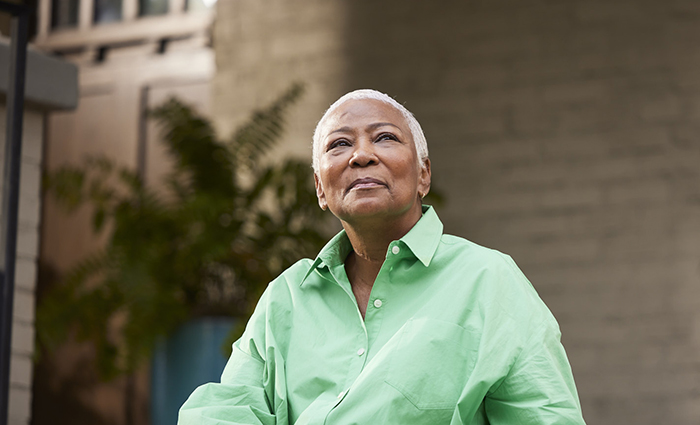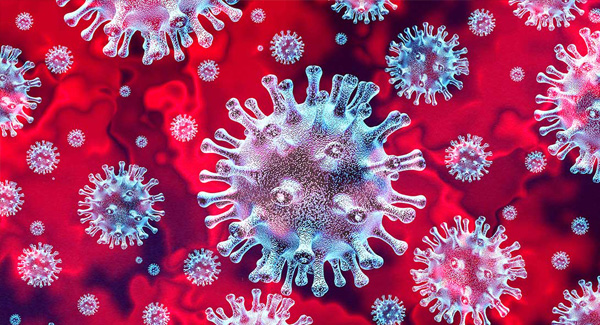Rheumatoid Arthritis: Causes, Symptoms, Treatments and More
This inflammatory form of arthritis causes joint pain, swelling and damage. Learn more about RA and how to treat it.
Updated Oct, 15, 2021
Rheumatoid arthritis (RA) causes joint inflammation and pain. It happens when the immune system doesn’t work properly and attacks the lining of the joints, called the synovium. The disease commonly affects the hands, knees or ankles, and usually the same joint on both sides of the body, such as both hands or both knees. But sometimes RA causes problems in other parts of the body as well, such as the eyes, heart and circulatory system and/or the lungs.
For unknown reasons, more women than men get RA, and it usually develops in middle age. Having a family member with RA increases the odds of developing RA.
Causes
In a healthy person, the immune system fights invaders, such as bacteria and viruses. With an autoimmune disease like RA, the immune system mistakes the body’s cells for foreign invaders and releases inflammatory chemicals that attack those cells. Tn RA, it attacks the synovium, the tissue lining around a joint that produces a fluid to help the joint move smoothly. The inflamed synovium gets thicker and makes the joint area feel painful and tender and look red and swollen, and moving the joint may be difficult.
Researchers aren’t sure why people develop RA. They believe these individuals may have certain genes that are activated by a trigger in the environment, such as a virus or bacteria, physical or emotional stress or some other external factor.
Symptoms
In the early stages, people with RA may not see redness or swelling in the joints, but they may experience tenderness and pain.
These symptoms are clues to RA:
- Joint pain, tenderness, swelling or stiffness that lasts for six weeks or longer.
- Morning stiffness that lasts for 30 minutes or longer.
- More than one joint is affected.
- Small joints (wrists, certain joints in the hands and feet) are typically affected first.
- The same joints on both sides of the body are affected.
Many people with RA get very tired (fatigue) and some may have a low-grade fever. RA symptoms may come and go. Having a lot of inflammation and other symptoms is called a flare. A flare can last for days or months.
Health Effects
- Eyes. Dryness, pain, inflammation, redness, sensitivity to light and trouble seeing properly.
- Mouth. Dryness and gum inflammation, irritation or infection.
- Skin. Rheumatoid nodules — small lumps under the skin over bony areas.
- Lungs. Inflammation and scarring that can lead to shortness of breath and lung disease.
- Blood vessels. Inflammation of blood vessels that can lead to damage in the nerves, skin and other organs.
- Blood. A lower than normal number of red blood cells.
- Heart. Inflammation can damage the heart muscle and the surrounding areas.
- Painful joints also make it hard to exercise, leading to weight gain. Being overweight may make people with RA more likely to develop high cholesterol, diabetes, heart disease and high blood pressure.
Diagnosis
Getting an accurate diagnosis as soon as possible is the first step to treating RA effectively. A doctor with specialized training in treating arthritis (called a rheumatologist) is the best person to make a correct diagnosis, using medical history, a physical examination and lab tests.
Medical history. The doctor will ask about joint symptoms (pain, tenderness, stiffness, difficulty moving), when they started, if they come and go, how severe they are, what actions make them better or worse and whether family members have RA or another autoimmune disease.
Physical examination. The doctor will look for joint tenderness, swelling, warmth and painful or limited movement, bumps under the skin or a low-grade fever.
Blood tests. The blood tests look for inflammation and blood proteins (antibodies) that are linked to RA:
- Erythrocyte sedimentation rate (ESR, or “sed rate”) and C-reactive protein (CRP) levels are markers for inflammation. A high ESR or CRP combined with other clues to RA helps make the diagnosis.
- Rheumatoid factor (RF) is an antibody found (eventually) in about 80 percent of people with RA. Antibodies to cyclic citrullinated peptide (CCP) are found in 60 to 70 percent of people with RA. However, they are also found in people without RA.
Imaging tests. RA can cause the ends of the bones within a joint to wear down (erosions). An X-ray, ultrasound, or MRI (magnetic resonance imaging) scan can look for erosions. But if they don’t show up on the first tests that could mean RA is in an early stage and hasn’t damaged bone yet. Imaging results can also show how well treatment is working.
Treatment
The goals of RA treatment are to:
- Stop inflammation or reduce it to the lowest possible level (put disease in remission).
- Relieve symptoms.
- Prevent joint and organ damage.
- Improve function and overall well-being.
- Reduce long-term complications.
To meet these goals, the doctor will follow these strategies:
- Early, aggressive treatment to reduce or stop inflammation as quickly as possible.
- Targeting remission or another goal (called "treat-to-target") to work toward few or no signs or symptoms of active inflammation.
- Tight control to keep inflammation at the lowest level possible.
Search arthritis.org to learn about medications your doctor prescribes for your rheumatoid arthritis.
Self-Care
Working with your doctor to ensure you get appropriate medical treatment is essential, but you can also take measures on your own to manage your RA and ease pain and fatigue. Diet, exercise, smoking cessation and mental health are all key to good health overall and controlling RA. Get help setting health goals and managing pain with the our pain resources.
Healthy Eating. A balanced, nutritious diet consisting of the recommended amounts of all the food groups helps promote wellness and makes it easier to maintain a healthy weight.
Daily movement. Even when you don’t have time to exercise, try to make movement part of your everyday routine. Use the stairs instead of taking the elevator. Park in a spot that makes you walk a bit to enter a building. Take the longer way to a meeting in your office.
Balancing activity with rest. It's important to try to stay physically active even during a flare, but rest is also especially important when RA is active and joints feel painful, swollen or stiff. Rest helps reduce inflammation and fatigue that can come with a flare. Taking breaks throughout the day protects joints and preserves energy.
Hot and cold treatments. Heat treatments, such as heat pads or warm baths, tend to work best for soothing stiff joints and tired muscles. Cold is best for acute pain and swollen joints. It can numb painful areas and reduce inflammation.
Topical products. These creams, gels or stick-on patches can ease the pain in a joint or muscle. Some contain the medicine that you can get in a pill, and others use ingredients that irritate your nerves to distract from pain.
Stress Reduction and Complementary Therapies. There are different ways to relax and stop focusing on pain. They include meditation, deep breathing, and thinking about images in your mind that make you feel happy. Massage can help reduce pain, relax sore muscles and ease stress or anxiety. Acupuncture involves inserting fine needles into the body along special points to relieve pain. If you don’t like needles, acupressure uses firm pressure instead.
Supplements. Studies show that curcumin/turmeric and omega-3 fish oil supplements may help with rheumatoid arthritis pain and morning stiffness. However, talk with a doctor before taking any supplement to discuss side effects and how it may affect other medicines you are taking.
Positive Attitude and Support System. Cultivate a network of friends, family members and co-workers who can help provide emotional support. Take time to do things that you enjoy to lift your mood, which can help relieve pain.
Rheumatoid Arthritis
People in the United States who have rheumatoid arthritis.
Women are three times more likely than men to develop RA.
In women, RA most commonly begins between ages 30 and 60.
RA is rare in men under the age of 45.

Today, 1 in 4 adults in America live with arthritis
Nearly 60 million adults and children in America are diagnosed with arthritis, and most have pain that interferes with their daily lives. Every dollar you give helps provide research, support and services. Please give now to help conquer arthritis pain.
;Together, we are conquering arthritis.
The resources we provide and the progress we make are only possible because of people like you. Your gift will help provide our community greater access to care, support and resources and fund groundbreaking research that brings us closer to a cure. Arthritis is relentless. So are we. Please give today!



